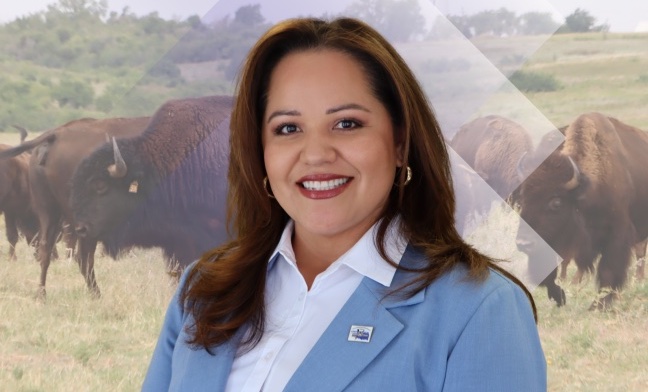
- Details
- By Chez Oxendine
- Finance
After 15 years in mainstream banking, Tara De Leon is coming home to serve her tribe as the CEO of the new nonprofit Cheyenne and Arapaho Community Development Corporation (CACDC), which provides commercial loans, business training and financial education.
Since making its first loan in October 2024, the El Reno, Okla.-based Native community development financial institution (CDF) has provided over $350,000 in financing to four businesses owned by tribal members — including a gift shop and construction company — and has more loans in the pipeline.
“I wanted to finish out my working years for the tribe - and it’s an investment in my children, who are also tribal members,” De Leon, who served on CACDC’s founding board, told Tribal Business News. She spoke with us recently about her plans to support Native businesses and spur economic development in her community.
This interview has been edited for brevity and clarity.
How does your experience at Tinker Federal Credit Union translate to your new role at CACDC?
There are similarities in loan application processes. We review financials, analyze ratios, check credit reports, and break down payment information for applicants. The core lending principles are quite similar to my work at Tinker.
What’s different?
Our approach is more flexible and slightly riskier compared to traditional bank loans. We’re a little more lenient than a traditional bank might be.
Which makes more sense for new businesses or smaller scale businesses trying to grow.
Some businesses might not be ready for a traditional loan, or their model might not yet be strong enough to get approved. We were created to help with that.
How do you pull together funding for projects that are, say, riskier than traditional loan customers?
For us, we work on a 50/50 model — we help with 50% of the requested funding, and then we seek out other institutions to help with the other part of the funding. Sometimes it’s 50/50, sometimes it’s a little bit more or less, but it’s largely a one-to-one ratio of our funding and other funding going into a loan.
What types of business entrepreneurs do you work with that traditional banks might turn away?
Many small businesses struggle to get traditional loans, which is why CDFIs were created. We provide loans for applicants who can't go through traditional banking processes. We work with other financial institutions, typically funding 50% of a loan and seeking partners for the remaining amount. We have to maintain a certain ratio of how much we’re putting into the loan versus how much others are contributing.
Are you concerned about what’s ahead, given the Trump administration’s moves to gut the CDFI Fund, which provides economic support for Native CDFIs?
We're closely monitoring recent developments. We were told initially that there was an order that was going to dismantle the CDFI Fund and by extension our funding, but later we were told that the fund is operating as normal and not to expect any disruptions to existing programs. So everything is going ahead for the time being.
So what’s ahead, then, for the CACDC?
We’re working on products to help our applicants — you know, things like economic development classes and financial education. We’re also working on developing partnerships with other CDFIS and local financial institutions so that we can keep up that work of boosting economic growth within Indian Country. We’re helping to create jobs and income and get that capital support out to small businesses.
